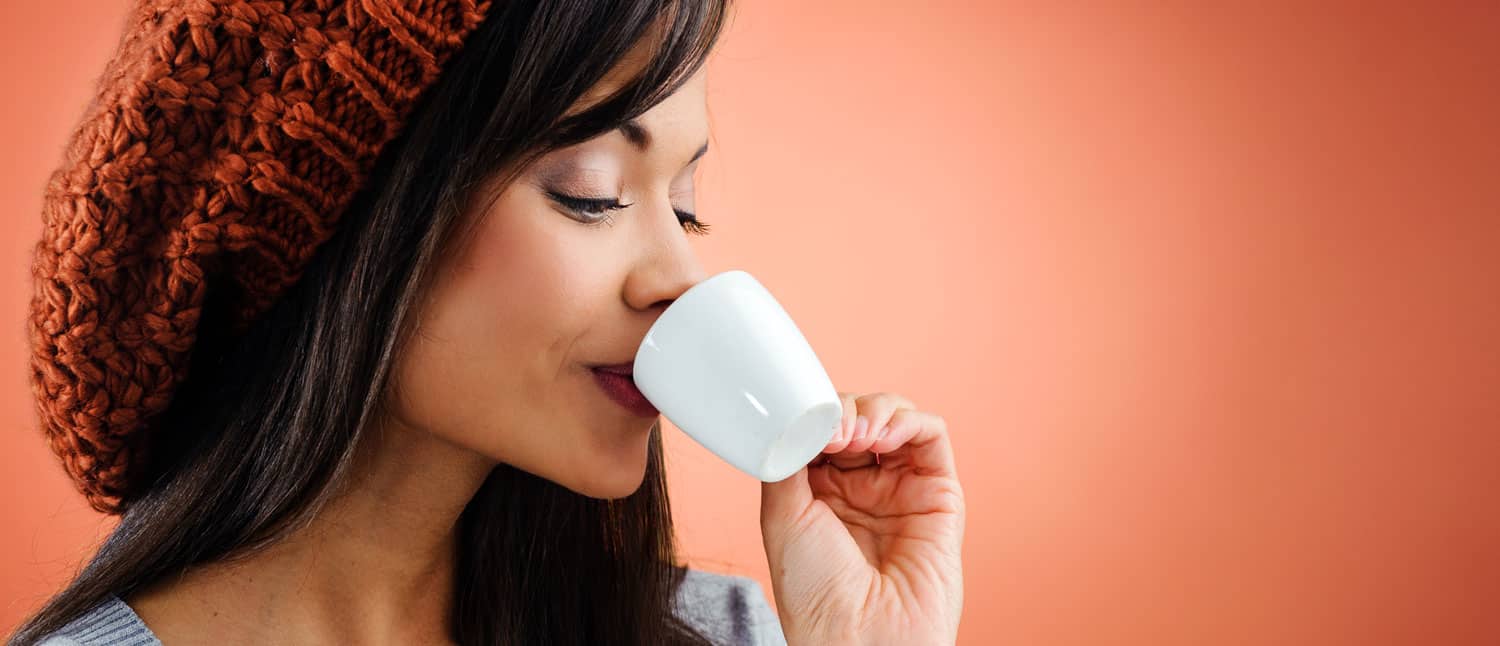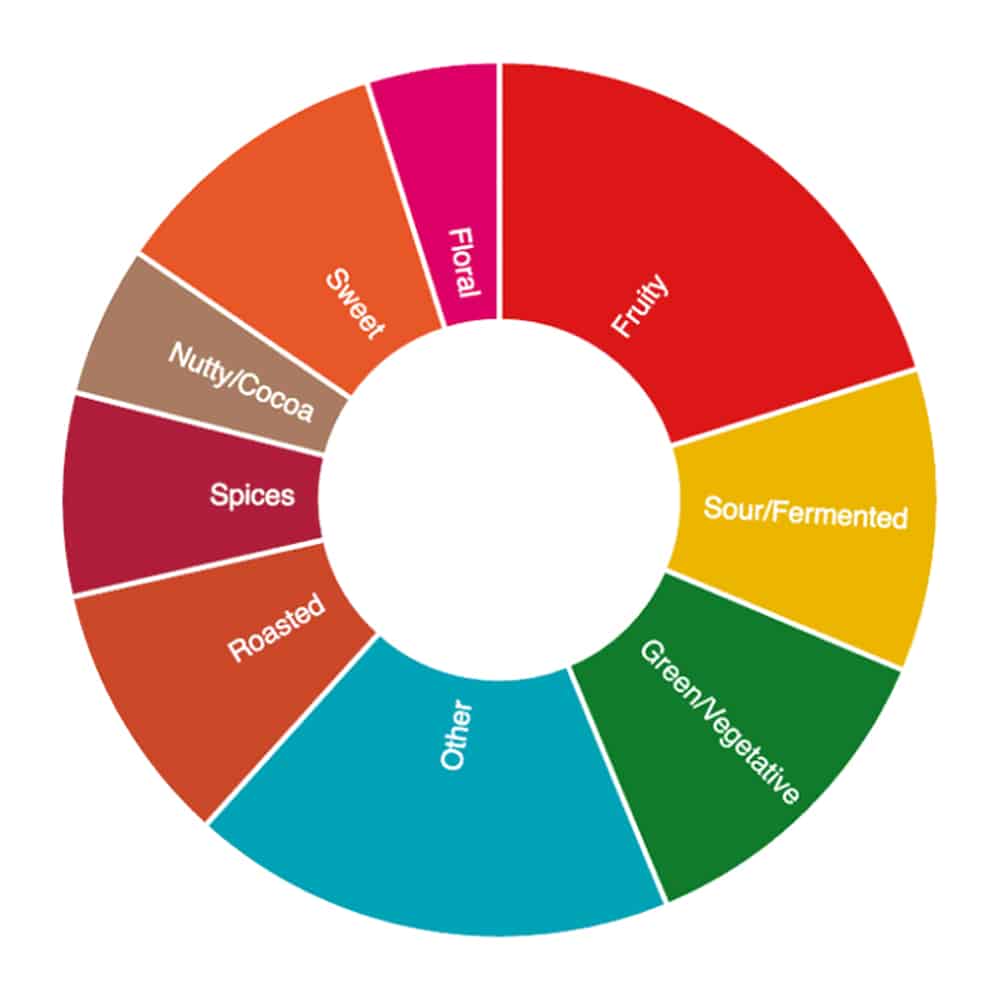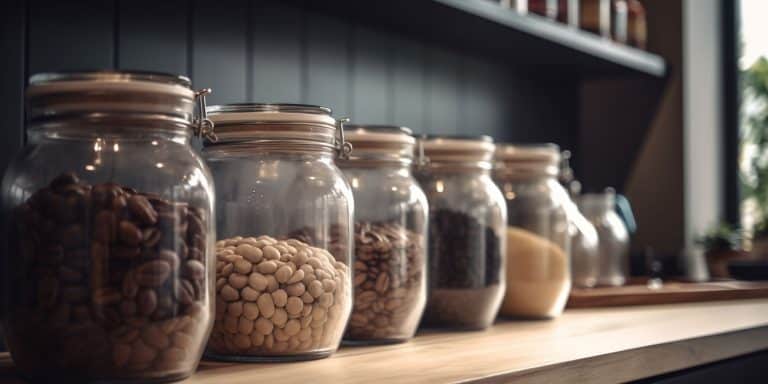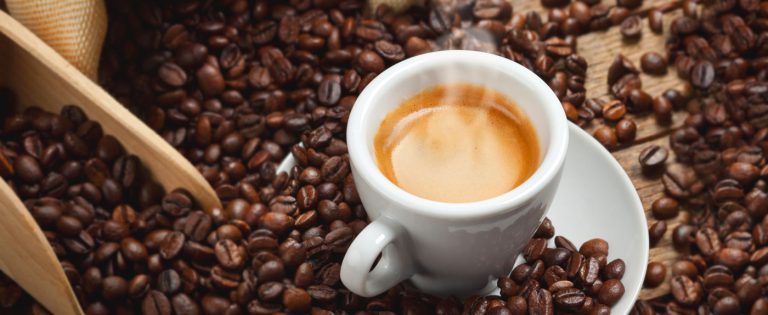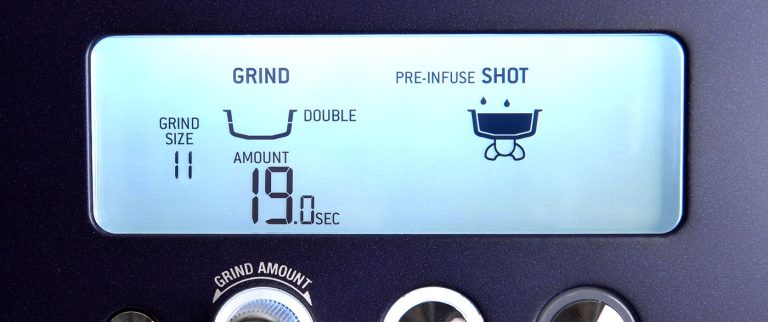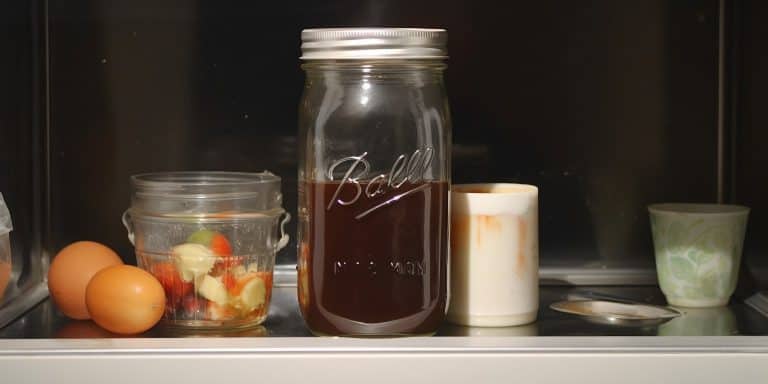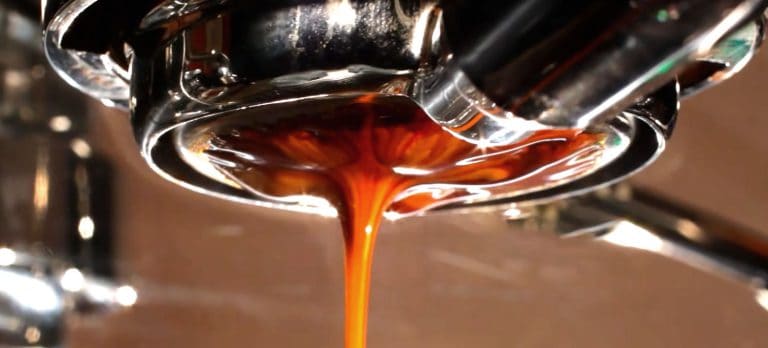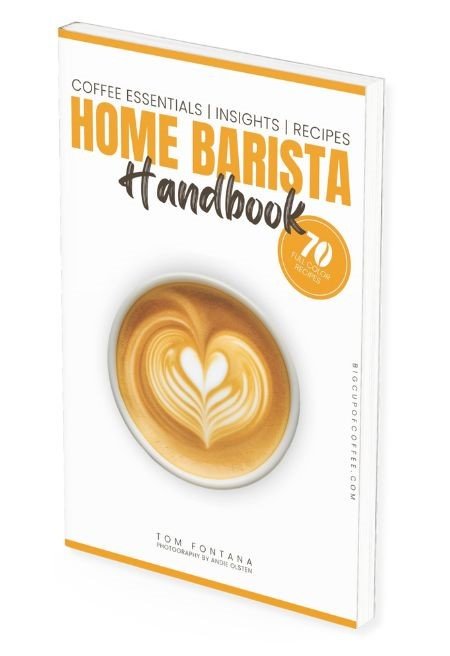How To Drink Espresso Like a Pro – Truly Appreciating Each Cup
Whether you’re an espresso aficionado or simply curious about what lies beyond your daily latte order at the local café, join me in discovering the vibrant world that awaits within every tiny cup of espresso.
Understanding Espresso Coffee
First off, what is espresso? For the uninitiated, espresso is a concentrated coffee beverage brewed by forcing hot water through finely-ground coffee beans using high pressure from an espresso machine. The result is a rich, dark liquid with a layer of crema on top.
Invented by Italians Luigi Bezzera and Desidero Pavoni, it first made its debut in 1906 in Milano, Italy. To help you better understand this popular coffee drink, here are some terms related to espresso that you might want to get familiar with:
- Portafilter: A handle with a basket for holding ground coffee, used in espresso machines.
- Crema: The tan-colored layer that forms on top of an espresso shot, created by the emulsification of oils in the coffee.
- Tamping: The process of compressing the ground coffee in the portafilter to create a consistent and even extraction.
- Ristretto: A short shot of espresso made with less water, resulting in a more concentrated and intense flavor.
- Lungo: An espresso shot made with more water, resulting in a longer extraction time and a milder flavor.
- Doppio or double shot: A serving of espresso made with twice the amount of coffee and water as a single shot.
What sets espresso apart from your regular coffee is its thick crema and more concentrated taste and strength. This is due to the high pressure (9 bars) that heightens the extraction, which is why the espresso usually has a 1:2 bean to yield brew ratio when your typical coffee has 1:16 ratio (aka Golden Ratio).
Preparing the Perfect Espresso Shot
To truly savor the perfect espresso shot, it’s essential to pay attention to the details in its preparation and presentation.
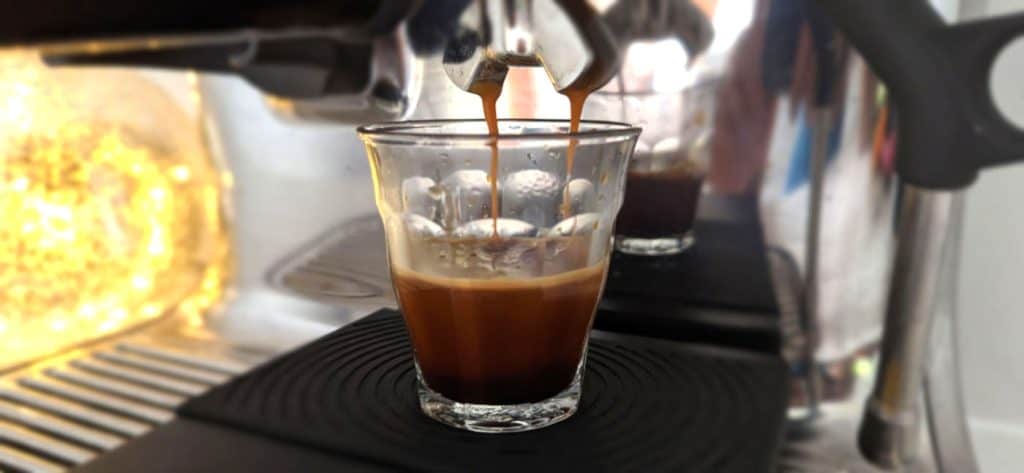
Without going into the intricacies of dialing in, here are the most important things:
- Start by selecting finely-ground coffee beans that have been roasted within 1 month, ensuring a fresh and flavorful base for your espresso.
- Use an espresso machine with consistent temperature control and pressure to extract the best possible flavors from your coffee grounds.
- Serve your perfectly pulled shot in a pre-warmed demitasse cup, which not only enhances the aroma but also maintains the ideal drinking temperature of this exquisite coffee drink.
- If you prefer to enjoy your espresso with steamed milk as part of a cappuccino or latte, be sure to use high-quality milk that has been frothed to a velvety texture, further elevating your good espresso experience into something truly magical.
How to Properly Drink and Enjoy Espresso
Now let’s get to the specifics of drinking and enjoying espresso. By following these steps, you can be an espresso virtuoso in no time.
Step 1: Ordering Your Espresso
If you’re anxious that ordering an espresso at a cafe might lead to the barista asking you questions you don’t understand, then brush up on your barista jargon and know exactly what you want:
- The classic, full-bodied espresso
- A double shot (or doppio)
- A lighter lungo, which is an espresso with a higher brew ratio of 1:3 to 1:4
- More intense ristretto, with a brew ratio of 1:1
Even though an espresso is meant to be consumer straight, without sugar or condiments, you might also want to familiarize yourself with the most popular espresso and milk drinks such as:
Step 2: Serving Your Espresso
Once you’ve mastered ordering (or preparing) your espresso, it’s time to focus on the art of serving it just right. The way you serve your espresso can make all the difference in how you appreciate its complex flavors and aromas.
To drink espresso like a connoisseur, start by warming your demitasse cup. Maintaining the optimal temperature after pulling it from the machine maintains the richness and complexity of your shot.
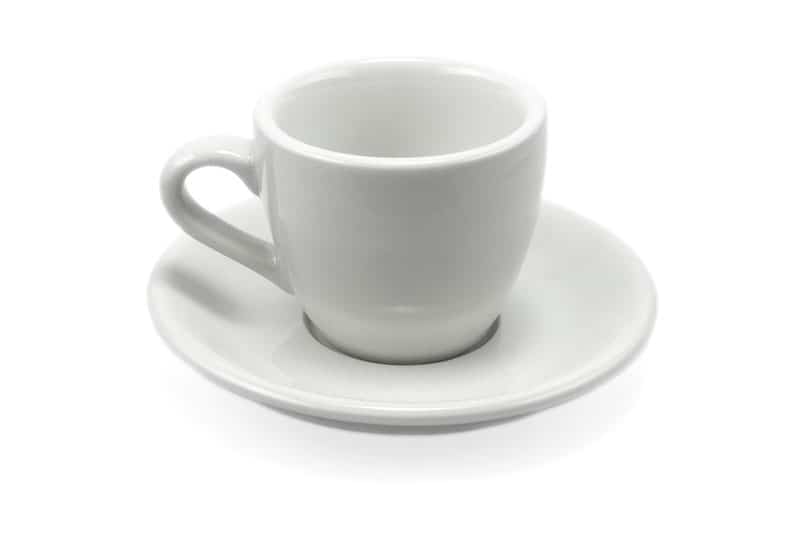
You’d also want a white cup which is ideal because its neutral color allows you to fully admire the rich crema on top of your espresso.
A clear glass cup is great and well, it is more modern than the classic demitasse.
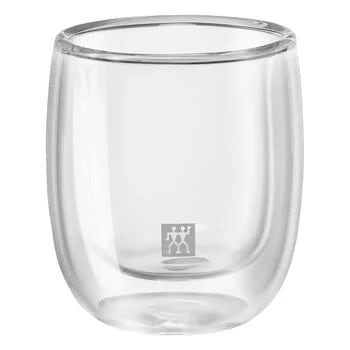
It is also important that before you take a sip, you first cleanse your palate which I’ll touch on more later in this article.
Step 3: Ensuring the Ideal Drinking Temperature
To truly savor your espresso in every sip, it’s crucial to ensure that it’s at the right temperature – not too hot that it burns your tongue, but warm enough to unlock its full symphony of flavors on your palate.
Here are a few tips for maintaining the best temperature for your espresso, which is between 90-96 °C (194-205 °F):
- Always pre-warm your demitasse before pouring in the shot.
- Don’t wait too long after receiving your espresso before taking that first sip. Enjoying an espresso promptly allows you to fully appreciate all its nuances at its peak.
Step 4: Cleansing Your Palate
Before diving into your espresso experience, cleanse your palate by sipping on some sparkling water. This will help you better discern the various flavors and nuances of your espresso.
As you sip the sparkling water, let it gently wash over your tongue and taste buds to reset them.
This simple but important gesture ensures that when you drink your espresso, you can fully appreciate its unique characteristics without interference from any lingering flavors of a previous meal or beverage.
Step 5: Examining the Crema and Aroma
Now that your palate is refreshed, it’s time to delve into the rich crema and captivating aroma of your espresso shot.

Take a moment to appreciate its velvety texture and deep reddish-brown hue before smelling cup and taking in the aroma. You may recognize familiar smells like various fruits, chocolate, wood, caramel, etc.
Step 6: Stirring Your Espresso
So, you’ve admired the crema and taken in the aroma – but should you give your espresso a stir? Yes, you need to stir the espresso well before drinking. Some people don’t, but I recommend you do.
Consider these factors when deciding whether to stir your espresso or not:
- Stirring blends the thicker bottom layer with the lighter top layer, ensuring a well-balanced flavor in every sip.
- Some coffee enthusiasts prefer not to stir, as they enjoy tasting the distinct parts of their espresso separately.
- If your shot has been sitting for a bit, giving it a gentle swirl can help revive its flavors and bring out hidden notes.
Experimenting with both stirring and leaving your espresso untouched will allow you to discover which method best suits your taste buds.
Step 7: Sip and Savor the Flavor
Once you’ve decided whether to stir or not, take a moment to truly savor the complex and bold flavors of your espresso – it’s a delightful experience that’ll make you appreciate the art of coffee even more.
Allow the robust liquid to wash over your taste buds, and try to identify the different flavor notes that emerge from this exquisite concoction. You may detect hints of chocolate, fruit, nuts, or even floral tones depending on the origins and roast level of the beans used.
As you sip, consider how each element contributes to creating a harmonious balance between bitterness and sweetness. Don’t rush through this process; instead, let yourself become fully immersed in these sensations as they unfold in your mouth – it’s part of what makes drinking espresso such an enriching and gratifying experience.
If you want to take things to another level, examine this coffee taster wheel, and learn how to use it. It is the key to unlocking tasting notes and aromas you didn’t even know were present in coffee.
You can also consider finishing your espresso shot in three sips, a practice similar to how it is customary to consume Japanese tea in three sips. In the coffee world, it’s an unwritten rule that not everyone has to follow.
If you want to try it out though, just take a sip and appreciate the flavors and mouthfeel. Give it a few seconds and take another sip. On the third sip, you can finish off your espresso.
Tips for Enhancing Your Espresso Experience
Espresso is more than just a quick caffeine fix, it’s an experience. Here are some tips to enhance your espresso experience:
1. Pair your espresso with chocolate or other treats: Espresso pairs well with dark chocolate, biscotti, or almond croissants, enhancing its flavors.
2. Experiment with different types of espresso drinks: Don’t be afraid to try new things. Espresso can be enjoyed as a shot, doppio, ristretto, or lungo. Experiment with different types of espresso drinks to find your favorite.
3. Avoid adding sugar or milk to fully appreciate the flavor: Espresso has a rich and complex flavor that can be masked by adding sugar or milk. Try drinking your espresso without any added sweeteners or dairy to fully appreciate the flavor.
By following these tips, you can elevate your espresso experience and truly savor every sip.
Frequently Asked Questions
Here are some quick answers to questions about drinking espresso.
Yes, espresso is stronger than regular coffee because it is made by forcing hot water through finely-ground coffee beans at high pressure. This process extracts more caffeine and flavor from the beans, resulting in a concentrated shot of coffee.
No. Despite being called a shot, consuming it in one gulp is not the right way to drink espresso. Take your time to appreciate each sip.
Yes, you can add milk to espresso to make popular drinks like cappuccinos and lattes. The amount of milk added can vary depending on the desired strength and flavor of the drink.
Limit your espresso intake to no more than 6 shots per day. It is within FDA’s recommended caffeine consumption which is 400 mg of caffeine a day.
The best time of day to drink espresso is up to personal preference. Some people prefer to drink it in the morning to start their day, while others enjoy it as an afternoon pick-me-up.
If your espresso has a sour or bitter taste, it may be a sign that the beans were not properly roasted or the shot was not extracted correctly. Additionally, if the crema (foamy layer on top) is thin or non-existent, this could also indicate a problem with the espresso.
Final Thoughts
If you’re a coffee lover but don’t know how to appreciate espresso just yet, then you’re missing out. So the next time you indulge in a cup, remember to take the time to admire its intricate layers and appreciate its exquisite flavors.
Life’s too short not to enjoy every last drop.

